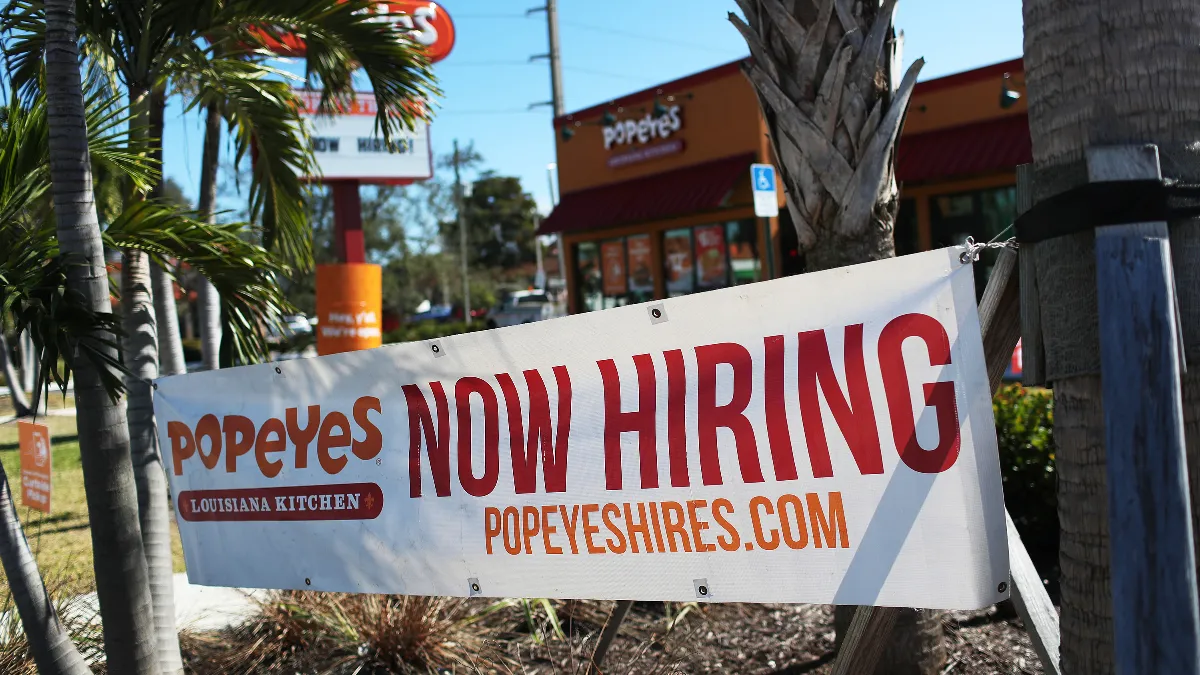Dive Brief:
- Popeyes' year-over-year Q3 2021 U.S. comparable sales fell by 4.5%, a drop driven primarily by traffic declines as ongoing labor challenges led to a reduction in service and operating hours. Late night hours were particularly challenged by the labor crunch, Restaurant Brands International CEO José Cil said on Monday during the company's Q3 2021 earnings call.
- The chain also experienced temporary distribution center interruptions in the Northeast, which impacted 10% of the system.
- RBI's staffing shortage impacted Burger King and Tim Hortons as well, but labor issues were most acute at Popeyes, Cil said. Other chains have seen disruption in service due to staffing challenges too, including McDonald's, Wendy's and Chick-fil-A.
Dive Insight:
Popeyes grew comp sales nearly 15% compared to Q3 2019 despite lapping the launch of its chicken sandwich. Still, the impact of the labor shortage is hard to ignore.
The chicken chain experienced about a one hour reduction in operating hours during the quarter compared to pre-pandemic levels. This occurred most often during late night hours, which typically attract more family business and produces higher checks, Cil said. About 40% of Popeyes' system is operating with reduced service, offering drive-thru, delivery and takeout only because of some of these staffing challenges.
Even the launch of Popeyes nuggets, which was incremental to the business and helped attract new guests and drive check, wasn't enough to offset these traffic declines, Cil said. The company is planning to enhance this category with the addition of new sauces, such as the new flavor developed with Megan Thee Stallion.
"We're focused on working with our franchisees to alleviate the impact of these challenges in the future," Cil said. "And while in-restaurant staffing may take time to improve, we're well into the process of further diversifying our distribution network in the region, mitigating the impact of any future distribution center disruptions on our supply chain."
RBI has also created working teams to address and to share best business practices for staffing. Some operators have already created job fairs and secured a pipeline of applicants, staffing up well, Cil said. The company is collecting technology and streamlining operations to allow for staffing levels to get where they need to be to help drive sales.
"We're looking at ways we can simplify life in the restaurant, looking at processes, looking at simplifying the menu," Matt Dunnigan, RBI CFO, said during the call. "There's a number of things we're working on here to address the pressure we're seeing on our franchisees. But overall, the number one thing we can do ... is to drive traffic and address our guests' needs and drive sales."
The chain did see daytime sales improve modestly or remain flat during the quarter. The company continues to generate over $1.8 million in annual sales per restaurant in the U.S. despite these challenges, Cil said.










